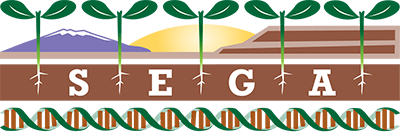You are here
Developmental trajectories in cottonwood phytochemistry.
Publication Type:
Journal ArticleSource:
Journal of chemical ecology, Volume 32, Issue 10, p.2269 - 85 (2006)ISBN:
0098-0331URL:
http://www.ncbi.nlm.nih.gov/sites/entrez?Db=pubmed&DbFrom=pubmed&Cmd=Link&LinkName=pubmed_pubmed&LinkReadableName=Related%20Articles&IdsFromResult=17001533&ordinalpos=3&itool=EntrezSystem2.PEntrez.Pubmed.Pubmed_ResultsPanel.Pubmed_RVDocSumhttp://www.ncbi.Keywords:
Crosses, Genetic, Glucosides, Least-Squares Analysis, Nitrogen, Phenols, Populus, ProanthocyanidinsAbstract:
<p>We examined the hypothesis that ecologically important phytochemical traits differ predictably among various developmental zones of trees (i.e., mature and juvenile zones of individual trees and juvenile ramets that sprout from roots) and that the slope of this phytochemical gradient represents a "developmental trajectory." We focused on Populus fremontii (Fremont cottonwood), P. angustifolia (narrowleaf cottonwood), and their natural hybrids. Two major patterns emerged. First, within narrowleaf and hybrids, concentrations of important phytochemicals (condensed tannins and phenolic glycosides) differ greatly and predictably between developmental zones. Second, developmental trajectories differ greatly among these cottonwood species and their hybrids: Fremont exhibits a flat trajectory, narrowleaf a steep trajectory, and hybrids an intermediate trajectory, suggesting an additive genetic component and an ontogenetic basis to this phytochemical variation. Because diverse herbivorous species respond to the phytochemistry of their host plants, we predict that the developmental trajectories of plants play a major role in mediating ecological interactions and structuring communities, and that biodiversity in a stand of trees is determined by both interplant genetic diversity and intraplant ontogenetic diversity.</p>
- Log in to post comments
- Google Scholar
- RTF
- EndNote XML
- RIS
Theme by Danetsoft and Danang Probo Sayekti inspired by Maksimer
